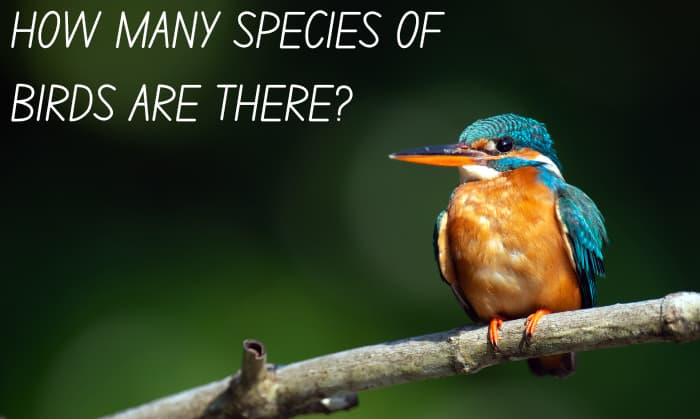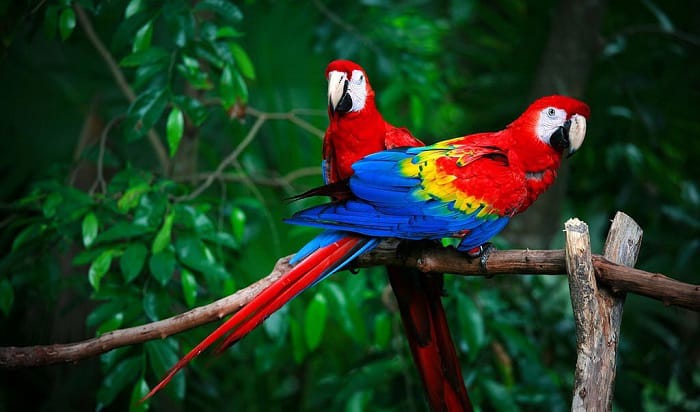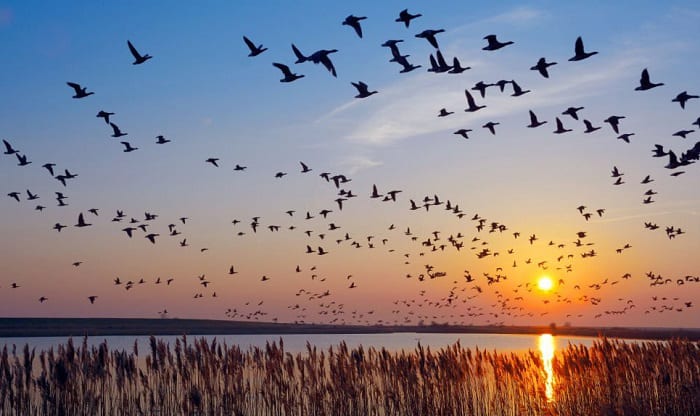Ever wondered how many species of birds are there worldwide? There are billions of birds that belong to around 11,160 species of avians. The research done to come up with this number was not an easy feat, but technology and curiosity combined, so the task was completed.
But of course, no one can truly say exactly how many birds are there. Unfortunately, many avian species have gone extinct, and others are declining in population.
Table of Contents
Bird Species Belonging to Avian Orders
Has it ever occurred to you to ask how many birds are in the world? Or do you simply admire the picturesque beauty of the feathered creatures? If you have genuine liking to birds there are species that may interest you more than others.
Number of Bird Species in the World
According to data in 2022, the total number of bird species is around 11,000. This statistics has not changed yet from records in 2020 and 2021. But of course, the research is not over.
Birds are found in forests, coastal areas, freshwater regions, sea, agricultural lands, residential locations, islands, and basically everywhere. No matter what the season is, avians are always around. This is mainly because there are migratory and non-migratory birds.
For dedicated birders such as yourself, learning about the various species of birds in the world helps you identify them. And understanding that each species belongs to different orders accentuates your knowledge.
Latest List of 40 Bird Orders
All species of birds belong to the 40 orders of avians. There used to be 23 only, but the continuous efforts of scientists and researchers made it possible for the list to be updated in recent years. Below are the various types of bird orders.
- Passeriformes – perching birds such as thrushes, oriental skylark, warblers, Asian fairy-bluebird, cardinals, and long-tailed tit.
- Accipitriformes – these are large, predatory, and diurnal avians such as eagles, kites, ospreys, vultures, and hawks.
- Falconiformes – these are graceful predators, such as the falcons.
- Caprimulgiformes – these nocturnal, big-headed, and insectivorous birds include oilbirds, potoos, frogmouths, owlet-nightjars, and nightjars.
- Anseriformes – waterfowl birds that include ducks, geese, and swans.
- Cariamiformes – ground-dwelling avians with lengthy legs, and include the seriemas species.
- Galliformes – different species of chicken-like avians that humans eat, like domestic chicken, quail, turkeys, partridge, and pheasants.
- Apterygiformes – flightless avians like the ground-dwelling kiwis.
- Leptosomiformes – exclusive avian order for the cuckoo roller species.
- Apodiformes – very small bird species with tiny legs and feet. Examples are swifts, treeswifts, and hummingbirds.
- Mesitornithiformes – bird order for three mesite species only.
- Casuariiformes – encompass two large flightless bird species, which are cassowaries and emus.
- Podicipediformes – grebes are bird species that build floating nests during the breeding season.
- Coraciiformes – colorful tree-loving avians such as motmots, bee-eaters,, kingfishers, and rollers.
- Pelecaniformes – these are bird species that are found near freshwater, such as shags and hamerkops. These avians eat marine species like fish.
- Suliformes – marine birds such as gannets and boobies are close cousins of the Ciconiiformes on the planet.
- Ciconiiformes – 21 stork-like bird species, including shoebills, bitterns, herons, and hammerheads.
- Piciformes – these avians are tree cavity nesters. You may have heard of woodpeckers, which belong to this order.
- Charadriiformes – includes over 350 avian species that thrive close to water. Some of them are African jacana, sandpipers, gulls, plovers, auks, and horned puffins.
- Struthioniformes – this avian order is exclusive to ostriches alone.
- Gaviiformes – these are aquatic birds, primarily the loons. There are five species in this order. Examples are the red-throated loon, common loon, and pacific loon.
- Coliiformes – herbivorous mousebirds that are similar to a mouse in appearance.
- Eurypygiformes – The sunbittern and kagu are known for their gorgeous plumage. Kagus have a smooth pale gray coloring, while sunbitterns are black, gray, and brown.
- Columbiformes – widely distributed bird species such as doves and pigeons. There are 344 species in this category..
- Strigiformes – 244 owl species are part of this bird order.
- Musophagiformes – plantain-eaters and turacos are members of this bird order. They are vulnerable species that need conservation.
- Cuculiformes – bird species that encompasses cuckoos, couas, anis, coucals, koels, roadrunners, and malkohas.
- Pteroclidiformes – encompasses the sandgrouses.
- Gruiformes – diverse in appearance, and mainly include the rail and crane species.
- Psittaciformes – consists of the favorite pet bird of humans, which is the parrot species.
- Opisthocomiformes – fan-like head crowns of the Hoatzins are distinctive for this bird order.
- Phaethontiformes – include red-tailed, white-tailed, and red-billed tropicbirds.
- Otidiformes – bustards, species with exceptional feet.
- Phoenicopteriformes – the tall and big flamingo species are from this order.
- Rheiformes – rheas are big, non flying birds on earth.
- Procellariiformes – avian species that love the sea are petrels and albatrosses.
- Trogoniformes – questzals and trogons are part of this order.
- Sphenisciformes – 27 penguin species belong to this order.
- Tinamiformes – tinamous are members of this bird order.
Factors That Contribute to the Decline of Birds
The world bird population has been declining, as evident with extinct avian species over the decades. The natural habitat of birds has been disturbed by human activities.
Agricultural fields and residential gardens are also using chemicals that are toxic to birds. And due to the steady increase of cars and glass windows, fowls often face collision accidents.
However, with the help of humans, thousands of bird species can regain their number. A simple feeder can actually go a long way in providing a good food source.
Conclusion
Now, you know how many species of birds are there. Avians belong to different bird orders; some are extinct, while many are still trying to survive.
Even at the present, researchers and scientists continue to study birds and are likely to discover additional species. When that happens, birders worldwide will surely love to know.
Kindly help us share this post if you like it. And if you have questions, please let us know through comments.

George and I became friends after a birdwatching trip with our new group. And we have been enjoying every adventure together. When he told me the idea of establishing a site that shares our experiences and fun, I immediately agreed. After trials and errors, here we have Thayerbirding.
















